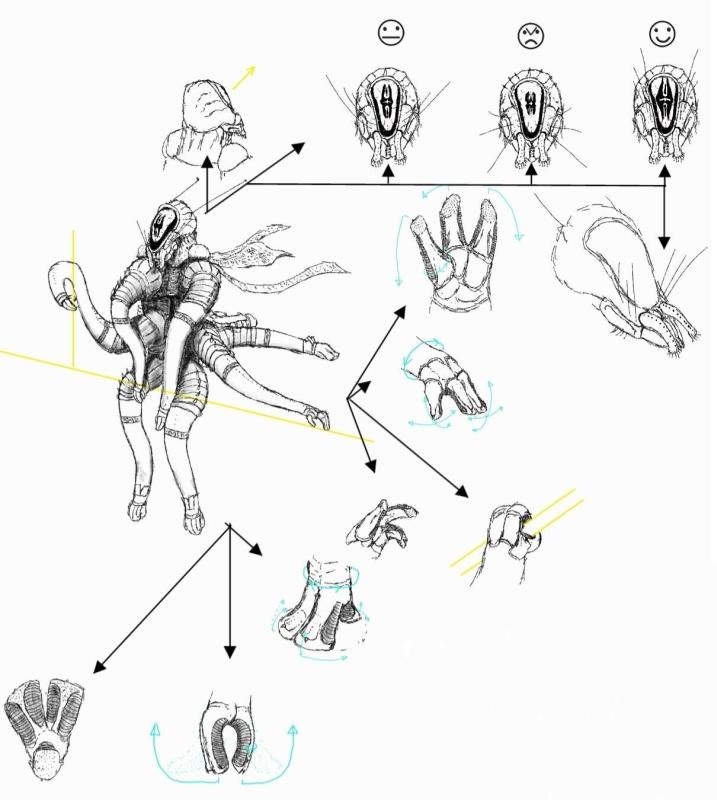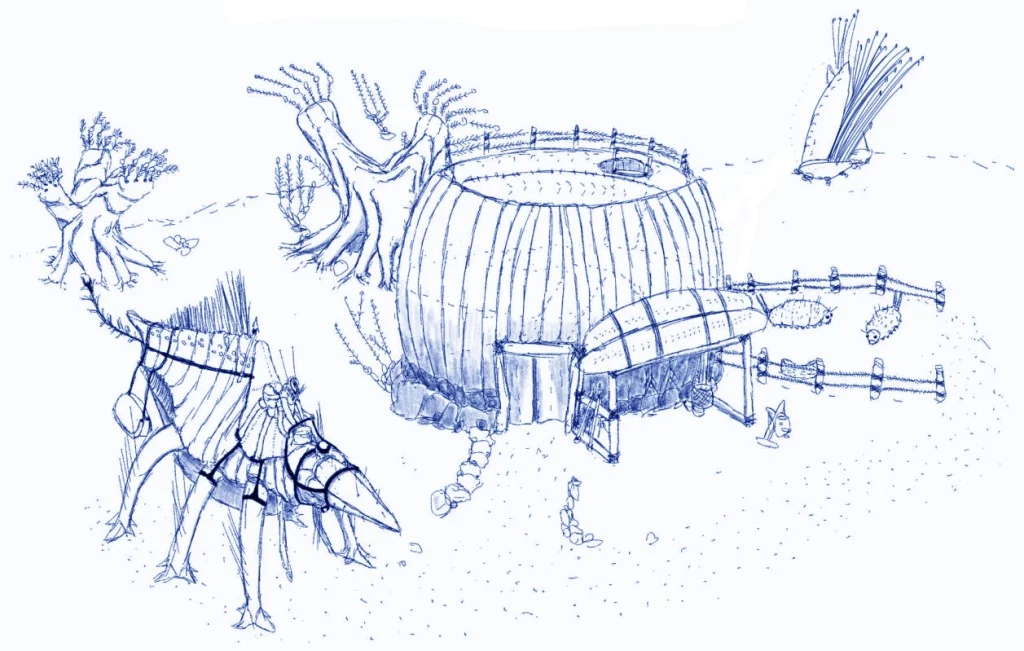
Shirrins (Iduiculis flexitarsus) are a highly intelligent octopedal species native to the arid habitable planet of Garmiwala.
Biology
The species’ most notable feature is its single, highly advanced shielded eye. It is covered in a layer of super clear enamel that gives them clear vision without the need for eyelids. The pupil is made of 3 lenses of sorts arranged in the rough “H” shape, with the central pupil being specialized for low-light nocturnal vision. With day temperatures easily exceeding 80 Celsius [176 Fahrenheit] at times, nocturnal adaptions are essential for survival.
While they are capable of complex sounds using their throat, most interspecies communication comprises of sign language as well as antennae movement. Pupil arrangement is also a big part of interspecies communication, as illustrated below.

The assorted mouth parts are located directly at the base of the eye and consist of a pair of drinking appendages and several sets of mandibles. The nasal and hearing organs are also located on these mouth parts (nostrils on the drinking tendrils, ears beside the eye at the back of each mandible). While omnivorous in diet, their primary food is fruit-analogs that blossom on the planet. However, fish-like invertebrates make up a reasonable portion of their diet as the meat is softer than that of the muscular land animals they dwell alongside.
All limbs are flexible with nearly 360° twisting capabilities, and are mostly muscle wrapped around a central cartilage spine – basically a string of connected ball joint ligaments. The lower 4 limbs are used almost exclusively for locomotion while the 4 upper limbs are used for grasping objects and feeding. Each limb has a 3 fingered/toed hand/foot. Both fingers and toes have specialized pads lined with chemoreceptors that help to locate the trails of predators/prey as they walk/feel around their environment.
Culture and Society
As Shirrins are fairly well armored externally, with thick rubbery plates across the back and chest and an armored spine, clothing is not seen as much of a necessity to this species. However, they do wear accessories where they feel practical, such as food/water baskets and belts for primitive tools.
The tools of this currently primitive tribal species are crudely fashioned from sticks, the dropped spear tips from the tongues of certain creatures, and silk cloth, which they can produce thanks to the domestication of silk-producing creatures. Using a spinning wheel too, the silk is spun into a sheet and coated in tree sap to give it better strength and elasticity, before being twisted into rope and other useful materials.
Shirrins build primitive settlements using raw materials from their environment. Their circular houses are made from the long segments of the shells of various plant species around them, and the thorned branches of other plants are plucked and tied to log posts as primitive fences. Rocks are used around the base of the houses to help keep the pieces in place during construction.
The greatest advancement this species has made to date is domestication via imprinting baby specimens of local fauna.
Illustrated below are some examples of such domestication: “caterpillar sheep” which produce the silk so important to this species, a large “Whistlewalker” being used as a beast of burden carrying a primitive set of cloth cargo bags, and a baby “fern splitter” being trained to assist in gathering hard-to-reach fruit from a tall plant.


This species was created by spec-evo artist and community member, Rezonant Void. You can check out more of his work here.